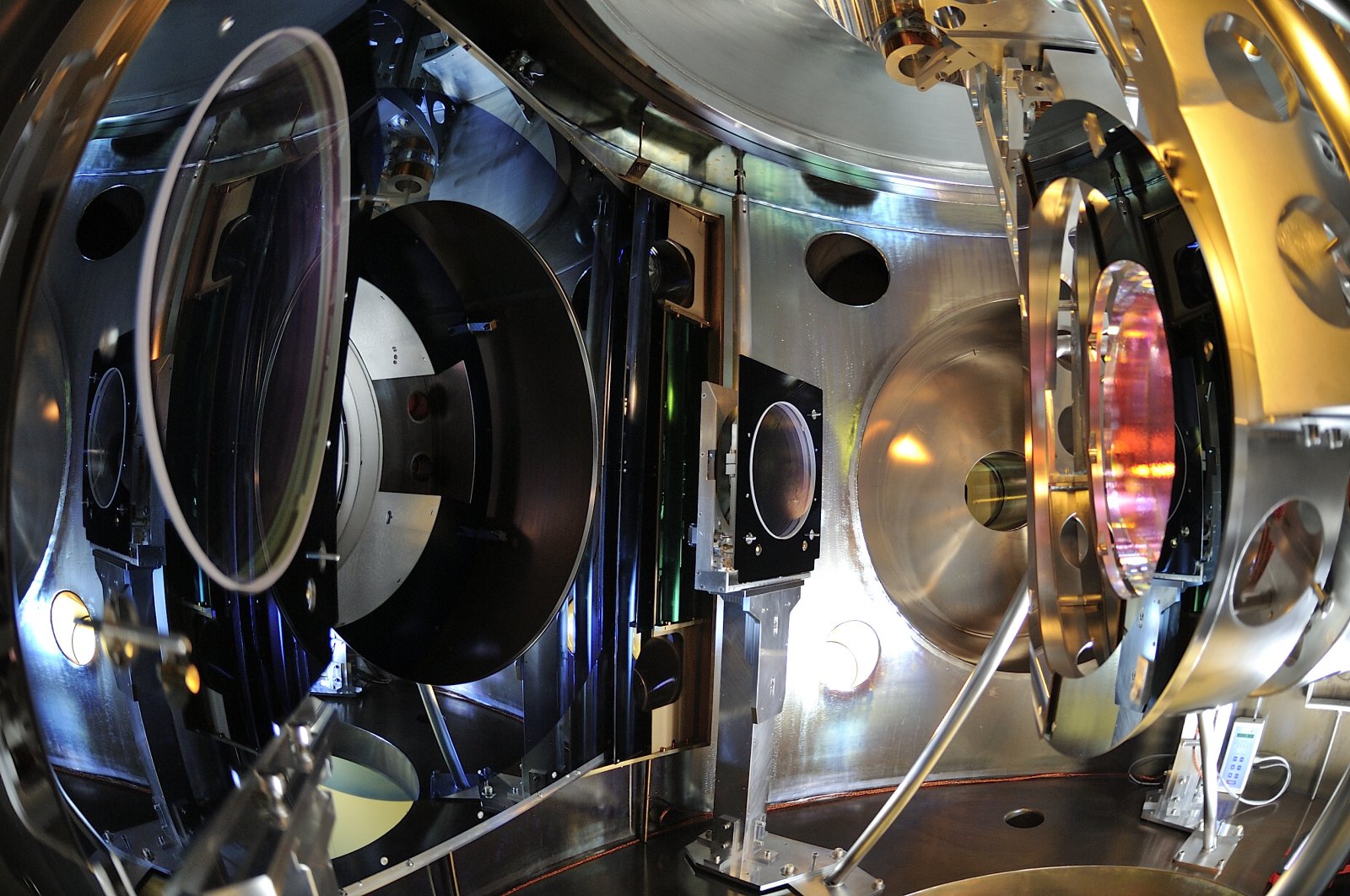Quantum effects make Virgo’s mirrors jitter
Image credit: EGO/Virgo Collaboration/Perciballi
.
Quantum mechanics does not only describe how the world works on its smallest scales, but also affects the motion of macroscopic objects, such as the 42 kg mirrors of the Virgo interferometer. To spot gravitational waves, Virgo and LIGO measure tiny changes in the lengths of their laser interferometer arms—changes as small as one ten-thousandth of a proton diameter. In fact the two detectors use laser light to measure with highest precision the relative position of mirrors kilometers apart. For this reason these mirrors are kept as ‘still’ as possible and shielded from all possible noises of human or environmental origin. Even in the absence of any gravitational-wave signals or noise sources, these mirror position measurements would show a slight jitter: this is due to the so-called shot noise, i.e. the pattern of the randomly and irregularly arriving light particles. In both Virgo and LIGO, during the observation period, this noise was reduced by ‘squeezing’ the light, using a particular technique of quantum optics. Unfortunately it is not possible to do this without paying a price.
Following one of the fundamental laws of Quantum Mechanics – Heisenberg’s uncertainty principle – a reduced shot noise results in increased radiation pressure noise: the force with which the stream of light particles pushes on the mirrors fluctuates more strongly. As a result, the mirrors, each weighing 42 kg, move back and forth more, simply because of the effects of quantum mechanics. In fact, the so-called shot noise affects the sensitivity of the detector at high frequencies, while the radiation pressure noise disturbs the detection of signals with lower frequencies. Getting out of this impasse is not easy. If on the one hand the detectors increase sensitivity to high frequencies, and therefore to a certain type of gravitational wave sources, on the other become less able to identify low-frequency signals.
“Thanks to the collaboration with the Albert Einstein Institute in Hannover – explains Jean Pierre Zendri, senior researcher of the Istituto Nazionale di Fisica Nucleare (INFN) in Padova and member of the Virgo Collaboration – we succeeded to show for the first time a clear evidence of the radiation pressure noise on the massive detector mirrors. This was allowed by the extraordinary sensitivity of Advanced Virgo, which allows us to appreciate fluctuations of the mirror positions to less than a thousandth of a proton diameter.” The results of this research have been published now in Physical Review Letters.
To further improve the detector’s performance gravitational wave scientists are developing a new technology, called frequency-dependent squeezing, that will allow to reduce the quantum mechanical noise at both high and low frequencies. The implementation of this technology is actually one of the crucial steps of the upgrade of the Advanced Virgo Interferometer, undergoing in the next months at the European Gravitational Observatory near Pisa in Italy.
Additional information about the gravitational-wave observatories:
The Virgo Collaboration is currently composed of approximately 580 members from 109 institutes in 13 different countries, including Belgium, France, Germany, Greece, Hungary, Ireland, Italy, the Netherlands, Poland, Portugal, Spain, Monaco and Japan. The European Gravitational Observatory (EGO) hosts the Virgo detector near Pisa in Italy, and is funded by Centre National de la Recherche Scientifique (CNRS) in France, the Istituto Nazionale di Fisica Nucleare (INFN) in Italy, and Nikhef in the Netherlands. A list of the Virgo Collaboration groups can be found at http://public.virgo-gw.eu/the-virgo-collaboration/. More information is available on the Virgo website at http://www.virgo-gw.eu.
Media contacts in Europe
EGO Communication Responsible
Vincenzo Napolano
napolano@ego-gw.it
+393472994985

